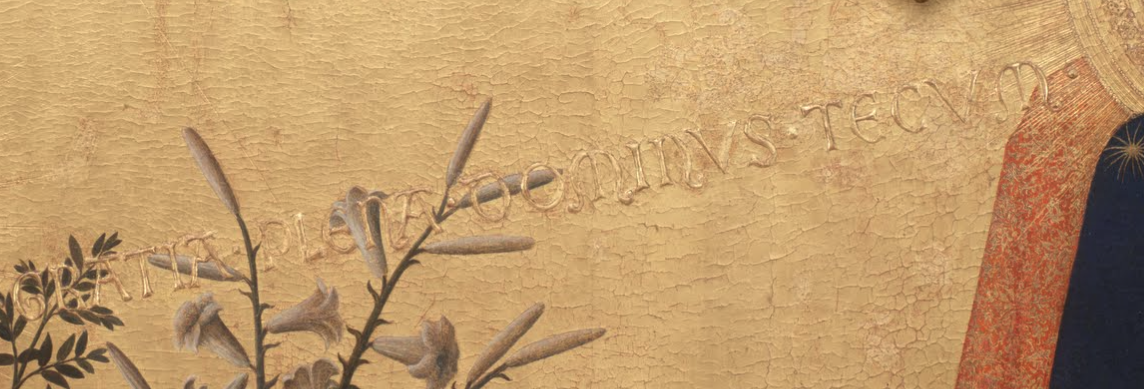
The Annunciation, as the moment of the Incarnation, is one of the key narratives of Christian belief and, as such, it is very frequently depicted in Christian art. It is, in fact, ubiquitous: on doors, in books, on amulets, in church windows, on the outside and inside of altarpieces, on bishop's mitres, in monks' cells… The Annunciation appears in all sorts of places, and one of the goals of the class will be to think about how the story or its content is read differently based on its placement.
The Annunciation, for all its centrality, is also a somewhat unusual image: it has two actors of nearly equal significance, Gabriel and Mary, and they are typically depicted symmetrically in the picture field. It is therefore the space between them, and not one of the two figures, that typically occupies the center of the image. This means that artists were faced with the problem of depicted space more obviously in the Annunciation than in most other images. Many early Renaissance experiments with perspective were especially visible in the Annunciation, as were other experiments with spatial setting. The class will therefore also consider the depicted space of the Annunciation, and the relationship between that depicted space and the scene's real placement.
- Kursverantwortliche/r: Juliette Calvarin